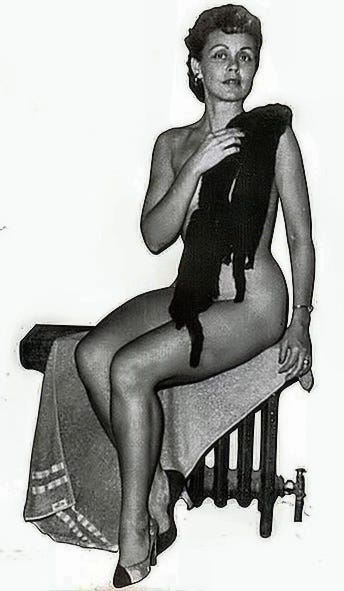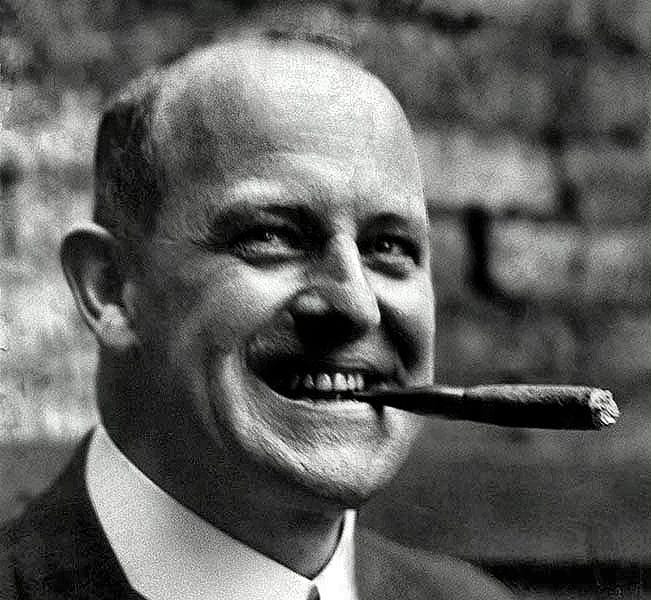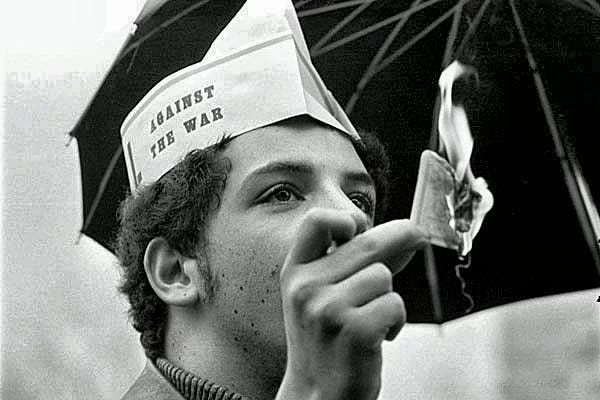Barry McGuire, singer-songwriter best known for the hit song, "Eve of Destruction," is 88 years old today
Barry McGuire, singer-songwriter best known for the hit song, "Eve of Destruction," is 88 years old today.
Born in Oklahoma City, McGuire moved to California in early childhood, when he was two years old. At age 16, he joined the United States Navy, but was discharged ten months later for being under age.
After working as a commercial fisherman, and then going on to become a journeyman pipe fitter, McGuire got a job singing in a bar. He formed a duo with Barry Kane (who died in 2013) called Barry & Barry. The new duo folk act performed their own brand of original folk arrangements at The Ice House, a small folk club in Pasadena, CA. before moving on to The Troubadour in Hollywood in the spring of 1962.
At The Troubadour, they both joined The New Christy Minstrels, a large folk group performing there. They continued to perform their separate duo act there as well as performing with The New Christy Minstrels.
They cut their first and only album as Barry & Barry — Here And Now. It contained songs such as "Gold Wedding Ring," "Land Of Odin," "Another Man," "Summer's Over," "You Know My Name," "Bull 'Gine Run" and "Far Side Of The Hill."
It also included "If I Had A Hammer," released three months after the release of the same song by folk trio, Peter, Paul and Mary. Here And Now, as an LP on vinyl, eventually went out of print. It has since been digitally remastered and re-released on CD.
As a folk rock solo singer in the 1960s, he was best known for his hits, "Eve of Destruction" and "Sins of the Family," both written by P.F. Sloan. The depressing message of “Eve of Destruction” was later answered by another hit song, “Dawn of Correction,” by The Spokesmen. "Eve of Destruction" sold over a million copies.
McGuire's LP, The Eve of Destruction, reached its peak of #37 on the Billboard 200 chart during the week ending September 25, 1965. That same week the single of that name went to #1 on both charts. McGuire was never again to break into the Top 40 of the Billboard Hot 100.
In the 1980s, McGuire left the music industry, and settled for a time in New Zealand with his New Zealand wife, Mari. She was the former secretary of McGuire's Agape Force associate, Winkie Pratney.
McGuire returned to the United States in the 1990s, teaming up with Terry Talbot and recording as Talbot McGuire. The duo released four albums between 1996 and 2000. McGuire did a brief stint with The New Mamas and the Papas in 1997-1998.
Here, Barry McGuire performs “Eve of Destruction” in 2011.
Marv Johnson, first artist on what would become the Motown label, was born 84 years ago today.
An R&B and soul singer, Marvin Earl Johnson was born in Detroit. He began his career singing with a doo-wop group called the Serenaders in the mid 1950s. With budding talents not only as a singer but as a songwriter and pianist, he was discovered by Berry Gordy while Johnson performed at a carnival.
Gordy had already decided to form his first record label, Tamla, and Johnson's recording of their song, "Come to Me," became the label's first single in May, 1959.
The fledgling label did not have national distribution and so the song was released by United Artists. It reached #30 on the Billboard Hot 100 chart. Johnson would co-write another four songs with Gordy.
Between 1959 and 1961, Johnson would issue nine Billboard Hot 100 singles including two Top 10s. The first of them was "You Got What It Takes," which reached #10 in the U.S. and #7 in the UK Singles Chart. It sold over a million copies and was awarded a gold disc.
"I Love The Way You Love" reached #9. He scored his final U.S. Top 40 single in 1960 with "(You've Got To) Move Two Mountains." It also sold a million copies, giving Johnson his second gold disc.
Johnson enjoyed many hits in Australia where he racked up a total of eight Top 40 hits, including three chart-toppers. "Come To Me" was released in Australia on EMI's London Records (as were most of his Australian releases) and reached #16 on the 2UE Top 40 in Sydney.
"You Got What It Takes" was his biggest Australian hit, topping the national charts for over 16 weeks in 1960.
After "I Love The Way You Love" became a national Top 10 hit in the mid 60s, Johnson flew to Australia to meet entrepreneur and Big Show creator, Lee Gordon, and performed in his September Big Show, "Twist It Up."
At the top of the bill were Bobby Rydell, Chubby Checker and James Darren with Jackie Wilson, Johnson and Barry Mann. They were supported by Johnny O'Keefe, The Delltones and Col Joye.
After issuing his final Motown singles in the U.S. in 1968, Johnson remained with Motown working on sales and promotion throughout the 1970s. He also wrote songs for Tyrone Davis and Johnnie Taylor.
Johnson continued singing into the 1990s, releasing a solo album on the London based Motorcity Records label.
Johnson died of a stroke on May 16, 1993, in Columbia, South Carolina, at the age of 54.
Here, Johnson performs “You Got What It Takes.”
Love of dance and the welcome atmosphere at Charlie’s Place, the black night club in 1950’s Myrtle Beach, South Carolina, attracted not only men but top white female dancers like Clarice Reavis.
Reavis — later to become a much celebrated female show dancer often called the “Queen of Shag” — minced no words in telling me what drew her to black music.
“I like the nigger blues, honey. They are so slinky, low down.”
Then, concerned that I had interpreted her description of the music as racist, she grabbed my arm and whispered, “You can call it ‘black music’ if you want in your book — if it will make people feel better. When I called it ‘nigger’ music, they called it ‘nigger’ music. There’s more feeling in there.”
Lining the walls of Fat Harold’s Beach Club in North Myrtle Beach are letters and mementos of the pioneers of the Shag. Among them is an iconic image of the era —a seductive pose by Reavis, among the first inductees into the Shaggers Hall of Fame.
Reavis, naked and partially covered only by a small mink stole, is seated on a towel. It was a simple photograph, taken on a whim, but it became a powerful pin-up coveted by American soldiers at the end of World War II.
“She was voluptuous and beautiful and completely alluring, and a bunch of 17 and 18-year-olds fell in love with her,” writer Bo Bryan said of Reavis’s allure. “She was strong as train smoke. You take a deep breath, she’d knock you out.”
The photo was made one night in 1945 when Reavis and a female friend were clowning at her home.
While in the bathroom, Reavis said she grabbed the small mink “and just draped it around me…not even fixing it…but it just happened to cover everything. My friend backed out of the bathroom with the camera just so she could get all of me in the picture.”
In the area surrounding Ft. Bragg, North Carolina, Reavis said she gave away thousands of the photos to soldiers who had seen it at various USOs and wanted one for themselves.
“Those were just young boys,” she said. “I was going to send one to my husband, but then the thing (the war) ended in 1945 and I didn’t get around to sending it.”
Clarice Reavis is featured in “Charlie’s Place,” on the Ku Klux Klan’s attack on black music after World War II.
Charlie’s Place is featured in the fourth edition of my book, Whitewash: A Southern Journey Through Music, Mayhem and Murder.
P. G. Wodehouse, English humorist, was born 141 years ago today.
Wodehouse’s body of work included novels, short stories, plays, poems, song lyrics and numerous pieces of journalism. He enjoyed enormous popular success during a career that lasted more than seventy years, and his many writings continue to be widely read.
Despite the political and social upheavals that occurred during his life, much of which was spent in France and the United States, Wodehouse's main canvas remained that of a pre– and post–World War I English upper class society, reflecting his birth, education and youthful writing career.
An acknowledged master of English prose, Wodehouse has been admired both by contemporaries such as Hilaire Belloc, Evelyn Waugh and Rudyard Kipling and by recent writers such as Christopher Hitchens, Stephen Fry, Douglas Adams, J. K. Rowling and John Le Carré.
Best known today for the Jeeves and Blandings Castle novels and short stories, Wodehouse was also a playwright and lyricist who was part author and writer of 15 plays and of 250 lyrics for some 30 musical comedies — many of them produced in collaboration with Jerome Kern and Guy Bolton.
He worked with Cole Porter on the musical Anything Goes (1934), wrote the lyrics for the hit song "Bill" in Kern's Show Boat (1927), wrote lyrics to Sigmund Romberg's music for the Gershwin – Romberg musical Rosalie (1928) and collaborated with Rudolf Friml on a musical version of The Three Musketeers (1928). He is in the Songwriters Hall of Fame.
Wodehouse spent the last decades of his life in the United States, becoming an American citizen in 1955, because of controversy that arose after he made five radio broadcasts from Germany during World War II, where he had been interned by the Germans for a year.
Speculation after the broadcasts led to allegations of collaboration and treason. Some libraries banned his books. Although an MI5 investigation later cleared him of any such crimes, he never returned to England.
Wodehouse died on February 14, 1975 in Southampton, New York at age 93.
Robert Rockwell is shown in the late 1980s with James Whitmore performing in The Orangeburg Massacre.
Photo by Frank Beacham
Actor Robert Rockwell was born 102 years ago today.
Rockwell was best known for playing the handsome, but awkward biology teacher Philip Boynton in the radio and television situation comedy, Our Miss Brooks, opposite Eve Arden.
He also starred in his own ABC western-themed television series, The Man from Blackhawk, in the 1959-1960 season. "Blackhawk" is an insurance company, and Rockwell, at thirty-nine, was cast as the company's key investigator, Sam Logan, who is assigned to weed out fraud in the payment of claims.
A native of Chicago, Illinois, Rockwell studied at the Pasadena Playhouse, from which he obtained a master's degree. After beginning his career as a contract player for Republic Studios, he began a 50-year acting career.
Rockwell appeared in more than 350 television episodes and, on stage, opposite José Ferrer in the 1946 Broadway production, Cyrano de Bergerac, and with Ginger Rogers during the 1960s in a San Diego production of Whitfield Cook's play, A More Perfect Union.
Rockwell was a founding member of the California Artists Radio Theatre. He played standard leads in a couple of anti-Communist-era features, including Republic's The Red Menace (1949), in which he is cast as a returning veteran of World War II, who is duped by communists.
In my radio drama, The Orangeburg Massacre, Rockwell played South Carolina attorney general Dan McLeod and the jury foreman. He was a pleasure to work with and a first rate professional.
Rockwell died in Malibu on January 25, 2003 at age 82 from cancer.
On this day in 2006 — 17 years ago — CBGB, the legendary New York punk club credited with discovering Patti Smith and Ramones, closed after a final gig by Smith herself.
Blondie and Talking Heads also found fame after performing at the club, which helped launch punk music.
The venue first opened in December, 1973. It’s full name CBGB OMFUG stands for "country, bluegrass, blues and other music for uplifting gormandizers."
Photo: New York Times
Photo by Richard Blair
The first draft card of the Vietnam War era was burned on this day in 1965 — 57 years ago.
It occurred in a demonstration staged by the student-run National Coordinating Committee to End the War in Vietnam.
These demonstrations drew 100,000 people in 40 cities across the country.
In New York, David Miller, a young Catholic pacifist, became the first U.S. war protestor to burn his draft card in direct violation of a recently passed law forbidding such acts.
Agents from the Federal Bureau of Investigation later arrested him. He was tried, found guilty and sentenced to two years imprisonment.
Cuomo Bridge, New York, 2018
Photo by Frank Beacham











